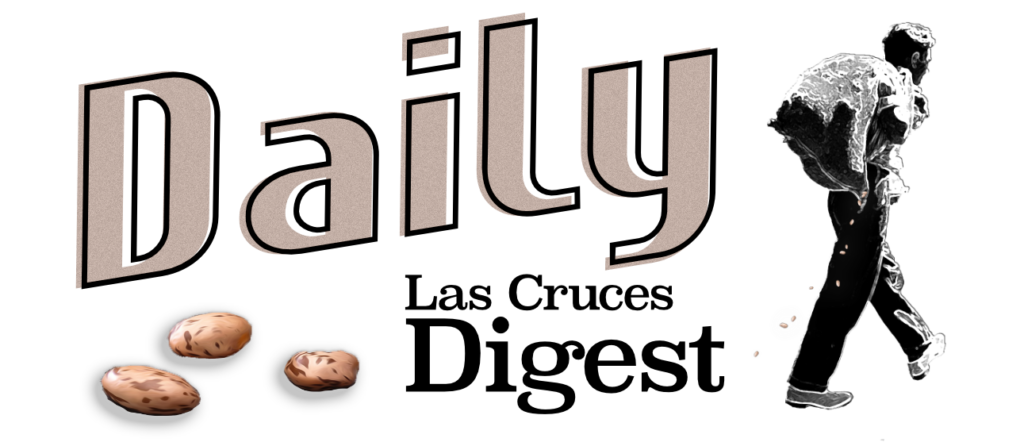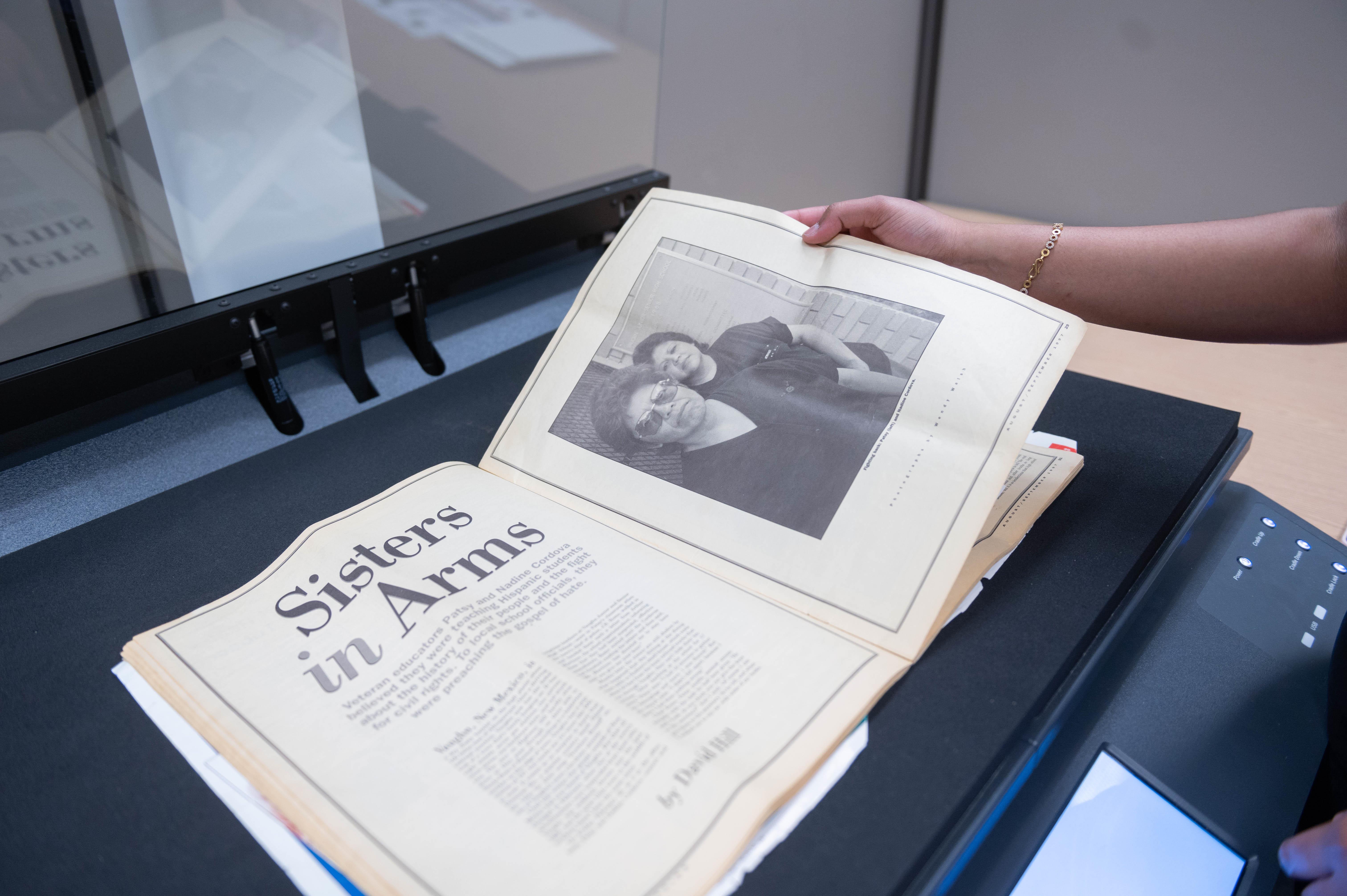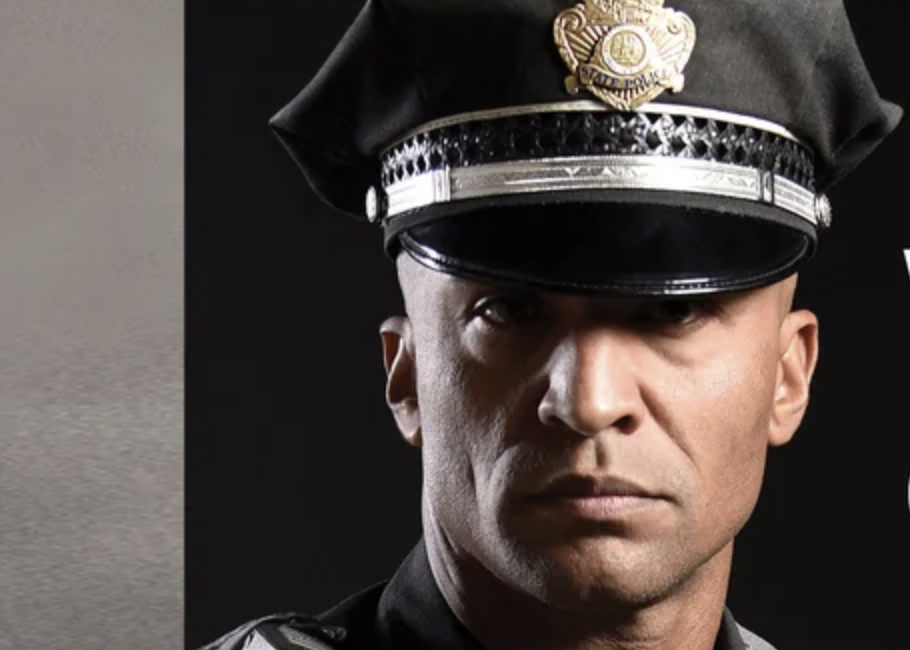Sindhu Talluri, a graduate assistant in the Department of Borderlands and Ethnic Studies at New Mexico State University, digitizes a magazine article about New Mexico educators Nadine and Patsy Cordova as part of an ongoing project to create more culturally inclusive social studies curricula for K-12 students. The project recently received $170,000 in congressional funding. (NMSU photo by Josh Bachman)
Source: NMSU News Release
DATE: May 23, 2024
WRITER: Carlos Andres López, 575-646-1955, carlopez@nmsu.edu
The Department of Borderlands and Ethnic Studies at New Mexico State University has received $170,000 in congressional funding to continue a research program dedicated to creating more culturally inclusive social studies curricula for K-12 students.
The funding will allow researchers in the department, also known as BEST, to continue to collaborate with educators in southern New Mexico to develop new lessons that meet revised social studies standards. The new standards – adopted by the New Mexico Public Education Department in 2022 – include a focus on ethnic, cultural and identity studies.
“I am beyond proud that our work made it into this final bill, especially as other states are trying to eradicate and omit stories that come from marginalized communities,” said Dulcinea Lara, BEST department head.
The program at NMSU originated four years ago at a time when racial and social justice movements intersected with the COVID-19 pandemic. Political divisions deepened and entered new frontiers – including schools. Debates flared over what students were learning, and concepts like critical race theory became lightning rods of controversy.
To understand what was happening in New Mexico classrooms, Lara teamed up with Cynthia Wise, a post-doctoral researcher in BEST, to conduct a study of school districts south of Socorro. Wise, who has a Ph.D. in educational leadership, recruited several educators who taught social studies at schools in Gadsden, Mescalero, Las Cruces and Silver City.
“The findings for us were not surprising, but similarly disheartening that the New Mexico curriculum is missing women, it’s missing people of color, it’s missing LGBT folks, it’s missing immigrants,” Wise said. “All these stories are not part of the dominant narrative of history.”
Wise and Lara then worked with a team of educators, NMSU faculty and youth from the Las Cruces nonprofit Learning Action Buffet to create new lessons that are more representative of missing New Mexican voices. Thus far, the group has developed seven lessons covering topics tailored to southern New Mexico, including Mexican farm workers known as Braceros, Japanese internment camps, Black communities in New Mexico, Missing and Murdered Indigenous Women, and figures such as Nadine and Patsy Cordova and Carmelita Torres.
“What we’re doing is getting everyone’s representation into these materials rather than thinking about a political divide,” Lara said. “It’s about a community place-based approach to how we tell the missing stories from New Mexican and borderlands communities like Vado, El Paso, Vaughn and other areas.”
Lara said the new funding will support the costs of digitizing historic materials – such as legal records, newspaper articles and political cartoons – and making those documents accessible to students and educators. The lessons and accompanying classroom kits and films will become available online.
Wise said she’d like New Mexico to produce its own instruction materials rather than rely on out-of-state publishing houses. She added that she and Lara are also eager to expand their work to subjects outside of social studies.
From personal experience, Lara knows that creating more culturally inclusive curricula will impact students beyond the classroom. For example, Lara said she was first introduced to the Cordova sisters and their plight to teach students about Hispanic heritage and civil rights as a graduate student in California. But had she learned about sisters earlier, she might have a set forth on a different trajectory, she said.
“These lessons will impact students who are growing up here, imbue them with a sense of pride, confidence, joy and a deeper belief in the power of peoples and communities of southern New Mexico,” she said.
For more information about the project, contact the BEST office at aleena55@nmsu.edu or visit https://healborderlands.org.






